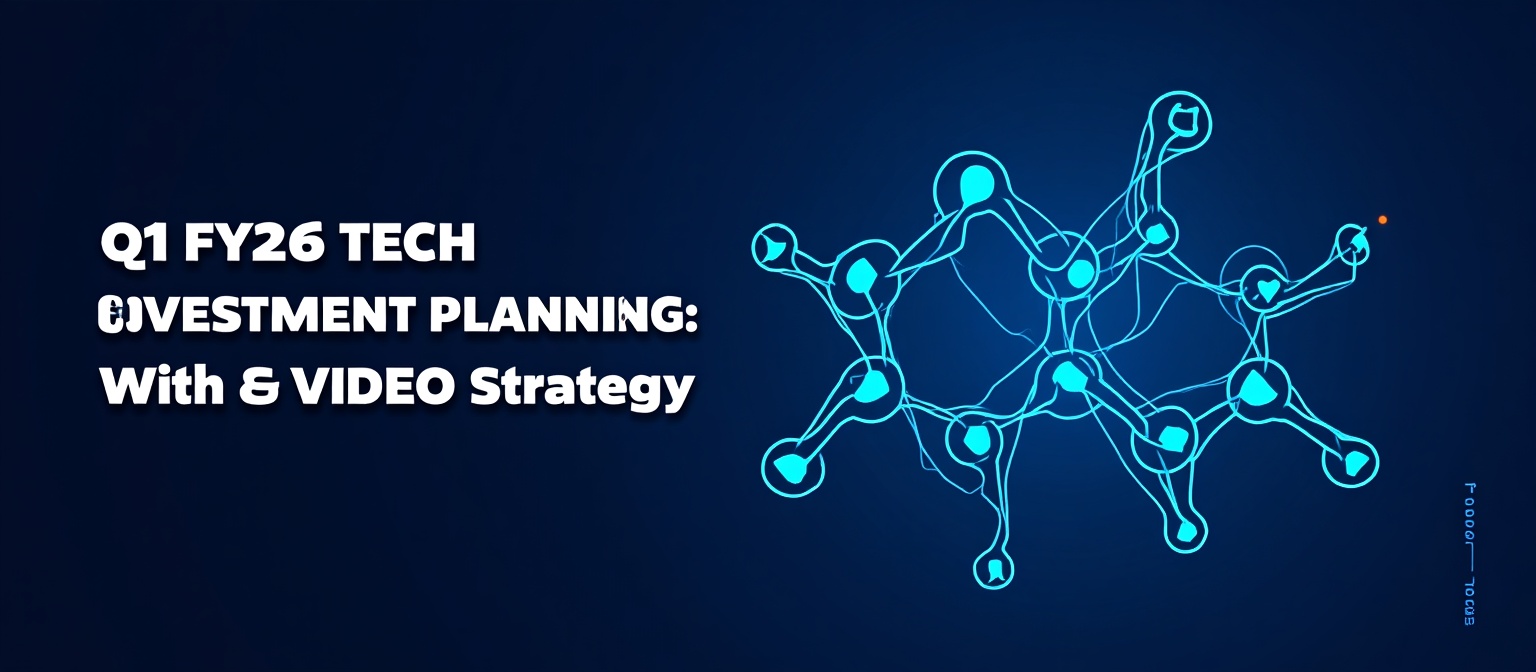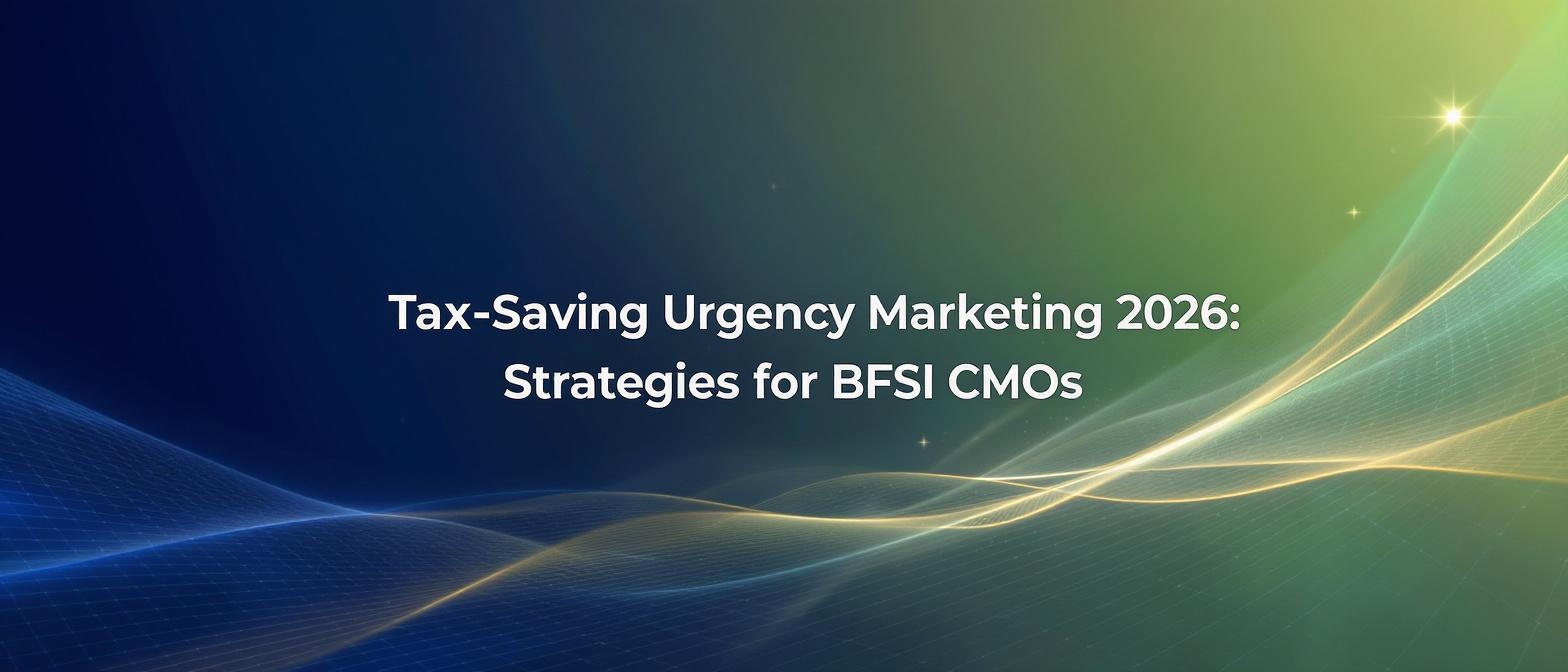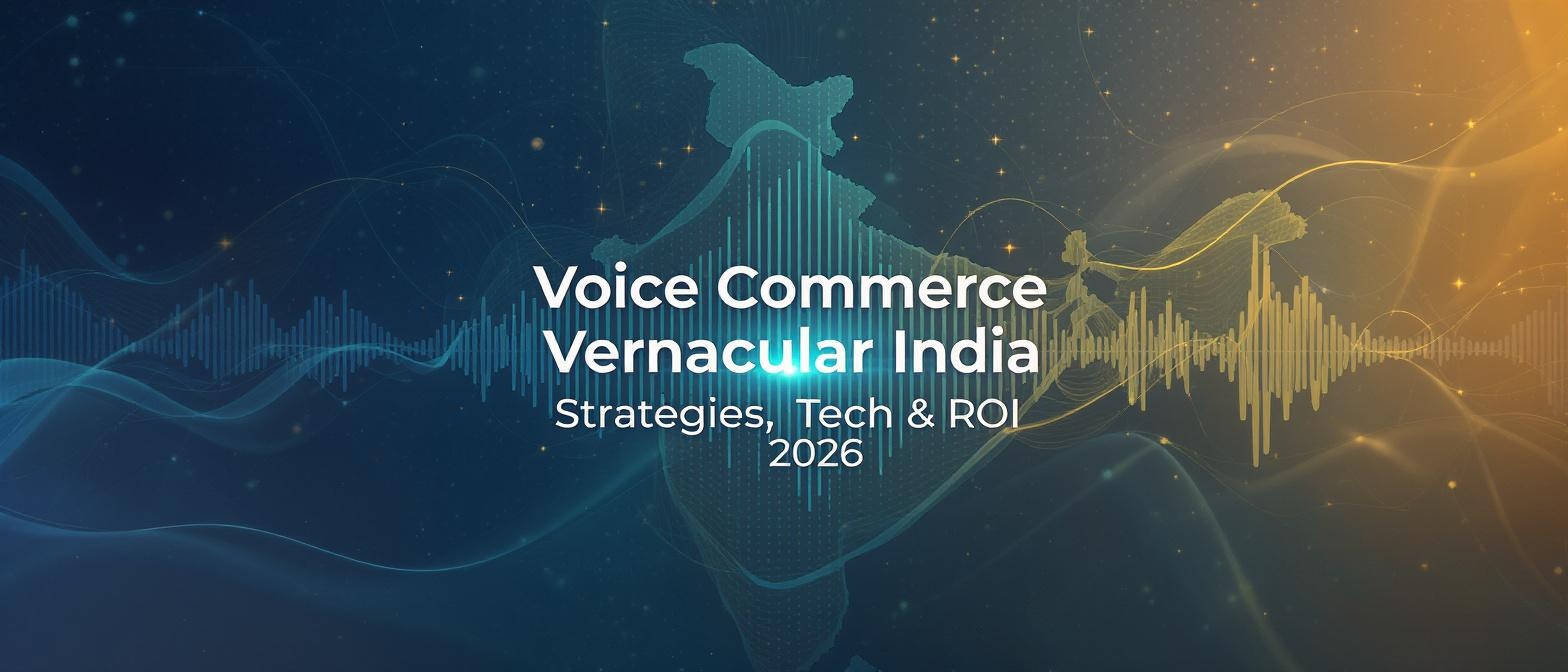Q1 FY26 Technology Investment Planning: Data-Driven AI & Video Personalization Strategies for Indian Enterprises
Estimated reading time: ~8 minutes
Key Takeaways
- Data-driven budgeting ensures every tech investment directly supports revenue and efficiency goals.
- Video personalization and AI marketing offer high-impact engagement for large-scale campaigns.
- FinOps-based cloud spend optimization is critical to controlling AI and automation costs in FY26.
- India’s regulatory and fiscal context drives the need for flexible, compliant, and ROI-focused tech strategies.
Understanding Q1 FY26 Technology Investment Planning: A Strategic Imperative
As Indian enterprises gear up for the new fiscal year, Q1 FY26 technology investment planning has become more than a budgetary exercise; it’s a strategic battle plan. Technology investment planning for Q1 FY26 means systematically aligning spend in areas such as AI, cloud modernization, and security with strategic business outcomes and KPIs. This process moves beyond mere capital allocation to forge a direct link between every tech dollar and its impact on revenue, efficiency, and customer experience.
For Chief Technology Officers (CTOs), Chief Financial Officers (CFOs), and budget committees, this meticulous approach is critical. The rapid evolution of technology, coupled with a dynamic regulatory landscape in India, demands resilient and flexible budgets. A well-structured plan for the fiscal year ensures that organizations can pivot quickly, scale successful innovations, and maintain a competitive edge without being constrained by rigid, outdated financial frameworks. This strategic foresight is the bedrock of sustained growth in the digital-first era.
Effective fiscal year technology planning India requires a forward-looking perspective, anticipating market shifts and technological advancements. The goal is to build a financial architecture that not only supports current operations but also fuels future innovation. By adopting robust Q1 budget planning strategies, enterprises can transform their technology spend from a cost center into a powerful engine for value creation.
Source: https://www.truefan.ai/blogs/2026-digital-transformation-budget-planning, https://www.opm.gov/about-us/reports-publications/2023-2026-information-technology-strategic-plan.pdf
Section 1: The Ascendancy of AI Marketing and Video Personalization in FY26 Budgets
The conversation around enterprise AI marketing budget allocation 2026 has fundamentally changed. Generative AI and predictive analytics have moved from experiments to core pillars in enterprise marketing, customer experience, and digital transformation. According to Gartner, by 2026, more than 80% of enterprises will have used generative AI APIs or deployed GenAI-enabled applications, a monumental leap from less than 5% in 2023. This signals a clear mandate for marketing leaders: integrate AI or risk obsolescence.
A key driver of this shift is the meteoric rise of video personalization platforms. These advanced systems leverage API-driven integrations (Video Personalization API Integration) to deliver hyper-personalized campaigns at a scale previously unimaginable. Instead of one-size-fits-all video ads, brands can now create millions of unique video messages, each tailored to an individual viewer’s name, purchase history, or location. Platforms like TrueFan AI enable this by turning a single piece of creative into infinite, personalized variations, fundamentally changing the economics of video production.
The Deloitte Tech Trends 2025 report underscores this movement, highlighting how generative AI is becoming an essential component of nearly all enterprise software. For marketers, this means that tools for content personalization, customer journey optimization, and predictive analytics are no longer optional. Justifying investment in these technologies requires a clear focus on outcomes, making AI personalization ROI planning a critical skill for marketing technology budget justification.
Source: https://www.truefan.ai/blogs/2026-digital-transformation-budget-planning, https://www.forrester.com/bold/planning-guide-2026-technology-executive/, https://www.gartner.com/en/newsroom/press-releases/2023-10-11-gartner-says-more-than-80-percent-of-enterprises-will-have-used-generative-ai-apis-or-deployed-generative-ai-enabled-applications-by-2026, https://www.deloitte.com/us/en/insights/topics/technology-management/tech-trends.html
Section 2: Data-Driven Budget Allocation for Marketing Automation and Cloud Spend
In the age of AI, gut feelings have no place in budget meetings. The most effective marketing technology budget justification is rooted in hard data and robust financial frameworks. Leading enterprises are adopting decision matrices that weigh a project’s potential business impact against its implementation complexity. This ensures that high-impact, low-complexity initiatives—often AI-powered personalization pilots—are prioritized for funding.
Leveraging historical performance data is paramount. By analyzing the ROI from previous AI pilots, marketing leaders can build a compelling, evidence-based case for increased spend. If a small-scale personalized video campaign resulted in a 15% uplift in conversions, that data becomes the cornerstone for justifying a larger, more ambitious rollout in FY26. This data-first approach transforms budget requests from speculative asks into strategic investments with predictable returns.
Furthermore, enterprise technology spend optimization now intrinsically involves FinOps and cloud cost management. As AI and automation tools consume significant cloud resources, controlling these costs is crucial. The Flexera 2025 State of the Cloud Report highlights that managing cloud spend remains a top challenge for enterprises. Implementing FinOps best practices—such as real-time cost visibility, resource rightsizing, and automated cost allocation—ensures that marketing automation delivers value without creating budgetary black holes. A core component of Q1 budget planning strategies is therefore to maintain a dedicated reserve fund. This allows organizations to rapidly scale AI and automation pilots that demonstrate strong early ROI while retaining the agility to reallocate funds away from underperforming initiatives.
Source: https://www.truefan.ai/blogs/2026-digital-transformation-budget-planning, https://www.forrester.com/bold/planning-guide-2026-technology-executive/, https://info.flexera.com/CM-REPORT-State-of-the-Cloud
Section 3: Maximizing Returns with Enterprise Video Marketing Investments
The strategic importance of enterprise video marketing investments cannot be overstated. According to Forrester, personalized video can drive 3x to 5x higher engagement and significant conversion lifts compared to static content. This is because personalization transforms a passive viewing experience into an active, one-to-one conversation, capturing attention in a crowded digital landscape. Wyzowl’s 2025 report reinforces this, finding that 91% of businesses use video as a marketing tool, with a vast majority reporting a positive ROI.
This is where hyper-personalization at scale becomes a game-changer. Consider these capabilities:
- Virtual Reshoots & AI Editing: Imagine needing to A/B test two different offers, such as “50% off” versus “Buy one get one free.” Traditionally, this would require two separate shoots, doubling production costs. With AI-powered virtual reshoots, a single line of dialogue can be altered in post-production, complete with perfect lip-sync, allowing for rapid, cost-effective campaign iteration.
- Multilingual Localization: TrueFan AI’s 175+ language support and Personalised Celebrity Videos allow brands to launch a single campaign that speaks to customers across India and the globe in their native language. This isn’t simple dubbing; advanced AI ensures the celebrity’s voice and lip movements are perfectly synchronized, maintaining authenticity and impact.
- Seamless API Integration: The power of personalized video is unlocked when it’s integrated directly into the customer journey. Use cases include triggering a personalized welcome video via the WhatsApp Business API when a new customer signs up, embedding a unique thank-you video in a post-purchase email, or delivering a re-engagement message within a mobile app.
The proof is in the data. Zomato successfully generated and delivered 354,000 unique, personalized celebrity videos in a single day for a Mother’s Day campaign. Similarly, Goibibo achieved a 17% higher message read rate on WhatsApp by sending users personalized video nudges from a celebrity that mentioned their recently searched travel destination. These real-world examples make a powerful case for prioritizing AI video platform ROI calculation in your enterprise AI marketing budget allocation 2026.
Source: https://www.forrester.com/bold/planning-guide-2026-technology-executive/, https://wyzowl.com/video-marketing-statistics/
Section 4: Navigating the Nuances of Fiscal Year Technology Planning in India
For multinational corporations and Indian enterprises alike, understanding the local context is crucial for effective fiscal year technology planning India. The Indian fiscal year, which runs from April 1st to March 31st, directly influences budgeting cycles, procurement timelines, and strategic planning horizons for FY26. Decisions made in Q1 (April–June 2025) will set the tone and trajectory for the entire year.
Several India-specific drivers are shaping technology investment priorities:
- Regulatory Compliance: The implementation of the Digital Personal Data Protection (DPDP) Act of 2023 has elevated data governance and security to a board-level concern. Technology budgets must now explicitly allocate funds for compliance tools, consent management platforms, and robust data encryption solutions.
- Hybrid Work Models: The normalization of hybrid work continues to fuel investment in cloud infrastructure, collaboration tools (like Slack and Microsoft Teams), and enhanced cybersecurity measures to protect a distributed workforce.
- Legacy Systems Modernization: As digital services become the primary channel for customer interaction, Indian enterprises are aggressively modernizing their legacy IT systems. This involves migrating applications to the cloud, adopting microservices architecture, and investing in agile development practices to improve time-to-market.
Consequently, the strategic priorities for Indian CTOs and CFOs in FY26 are clear. Cloud cost containment through FinOps, significant enhancements in cybersecurity posture, and vendor consolidation to reduce software portfolio complexity are top of the list. Alongside these foundational pillars, there is a strong push for strategic investments in emerging technologies, with generative AI and marketing automation leading the charge in fiscal 2026 marketing tech allocation. According to recent forecasts, IT spending in India is projected to continue its strong growth trajectory, with software and IT services seeing the fastest expansion as companies prioritize digital transformation.
Source: https://www.truefan.ai/blogs/2026-digital-transformation-budget-planning, https://www.gartner.com/en/newsroom/press-releases/2024-04-17-gartner-forecasts-indian-it-spending-to-grow-13-percent-in-2024
Section 5: Justifying Technology Investments with Concrete ROI Calculations
Securing budget approval for new technology requires a clear, quantifiable demonstration of its value. Solutions like TrueFan AI demonstrate ROI through measurable improvements in key business metrics. A robust AI personalization ROI planning framework is essential for making a compelling case to the finance committee. Vague promises of “better engagement” are no longer sufficient; every investment must be tied to tangible financial outcomes.
Here is a step-by-step guide to calculating the ROI for AI video platforms and marketing technology:
- Establish Baselines with Pre/Post Campaign Analytics: Before launching a new AI-powered campaign, meticulously document your baseline metrics. This includes conversion rates, click-through rates, customer acquisition cost (CAC), and engagement levels (e.g., time on page, video completion rate). After the campaign, measure the delta to quantify the lift.
- Implement Incremental Revenue Attribution: Isolate the revenue directly driven by the new technology. Using control groups is a highly effective method. For example, show a personalized video offer to 50% of your target audience while the other 50% receives a standard static ad. The difference in revenue generated between the two groups is your incremental revenue.
- Calculate Cost Efficiency Metrics: Compare the total cost of the AI platform against the budget that would have been required for traditional methods. For video, this means contrasting the AI platform subscription and usage fees with the costs of multiple location shoots, hiring various actors or influencers, and extensive manual editing for localization.
These components feed into a straightforward ROI formula:
ROI (%) = [(Incremental Revenue – AI Platform Spend) / AI Platform Spend] x 100
For broader benchmarks, Indian enterprises can look to industry reports. For instance, data on Email Marketing ROI in India, which often exceeds 40:1, serves as a powerful parallel use case for justifying investments in high-engagement digital channels. By adopting a rigorous, formula-driven approach to marketing technology budget justification, marketing leaders can speak the language of the CFO and secure the resources needed to drive growth. The focus on AI video platform ROI calculation ensures that investments are not just technologically advanced but also financially sound.
Source: https://netcore.co.in/, https://digitalmarketacademy.in/digital-marketing-blogs/email-marketing-metrics-india-2025/
Conclusion: Strategic, Data-Driven Planning for a Competitive FY26
As we stand at the threshold of FY26, the path to market leadership is paved with data, agility, and intelligent technology. The era of speculative tech spending is over. Successful Q1 FY26 technology investment planning requires a disciplined alignment of every investment to clear, measurable business outcomes. The ability to maintain budget flexibility is no longer a luxury but a core component of corporate strategy, allowing organizations to double down on what works and quickly pivot away from what doesn’t.
The best practices for CTOs, CFOs, and budget committees can be summarized in three key principles:
- Anchor every decision in data-driven insights. Leverage historical performance, predictive analytics, and clear ROI frameworks to guide your technology roadmap.
- Prioritize high-ROI, low-complexity pilots. Focus initial investments on scalable technologies like AI and video personalization that have a proven track record of delivering swift and substantial returns.
- Embrace agility through real-time analytics. Use quarterly performance reviews and real-time data dashboards to rebalance budgets, ensuring capital flows to the most promising initiatives.
By adopting these Q1 budget planning strategies, Indian enterprises can move beyond simply funding technology to strategically investing in it. This disciplined, outcome-oriented approach is the definitive formula for building a resilient, innovative, and competitive organization poised for success in FY26 and beyond.
Frequently Asked Questions
1. What exactly is Q1 FY26 technology investment planning?
Q1 FY26 technology investment planning is the strategic process of allocating and aligning technology budgets for the first quarter (April–June 2025) of the 2026 fiscal year with specific business goals. It involves prioritizing investments in areas like AI, cloud, and personalization based on their potential to drive revenue, improve efficiency, and enhance customer experience, ensuring every expenditure is justified by a clear business case.
2. Why is video personalization considered a key investment for 2026?
Video personalization is a key investment because it generates significantly higher engagement and conversion rates than generic video content. Statistics show personalized videos can lift engagement by 3x to 5x. In a competitive digital market, the ability to speak to each customer as an individual is a powerful differentiator that captures attention and drives action.
3. How does the Indian fiscal calendar (April–March) impact technology budgeting?
The Indian fiscal calendar requires businesses to finalize strategic plans and budget allocations early in the calendar year to be ready for the April 1st start. Q1 (April–June) becomes a critical period for kicking off new initiatives and deploying capital. Any delays in this quarter can have a cascading negative effect on the entire year’s technology roadmap and business targets.
4. How can an enterprise accurately measure the ROI of its AI marketing tools?
Enterprises can measure AI marketing ROI by establishing clear baseline metrics before a campaign and then tracking the uplift in conversions, engagement, and revenue afterward. Techniques like using control groups for A/B testing help isolate the incremental revenue generated directly by the AI tool. The final ROI is calculated with the formula: ROI (%) = [(Incremental Revenue – AI Tool Spend) / AI Tool Spend] x 100.
5. How can a platform like TrueFan AI help with scalable, multilingual marketing campaigns?
TrueFan AI is designed for this exact purpose. It uses generative AI to transform a single video shoot into millions of unique, personalized videos. Its technology supports over 175 languages with perfect lip-sync and voice cloning, allowing a brand to launch a nationwide or global campaign with authentic, localized messaging—without the prohibitive cost and complexity of traditional production methods.





